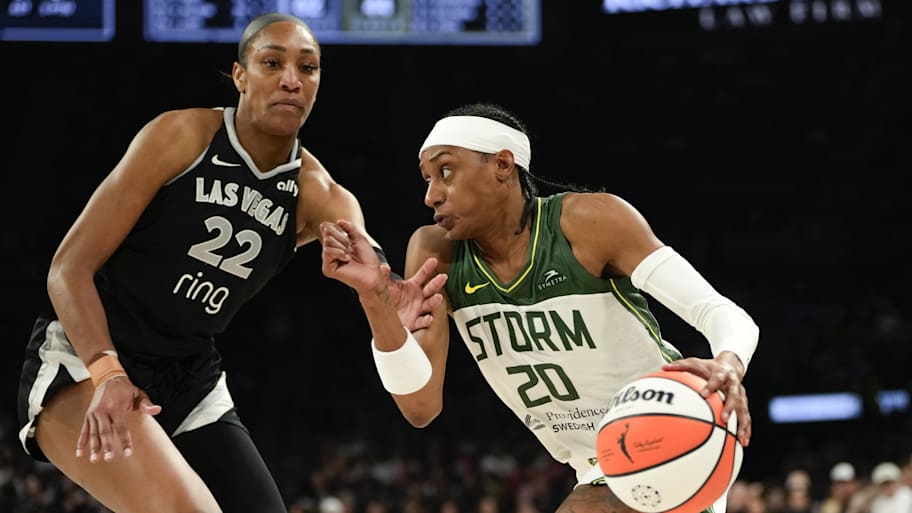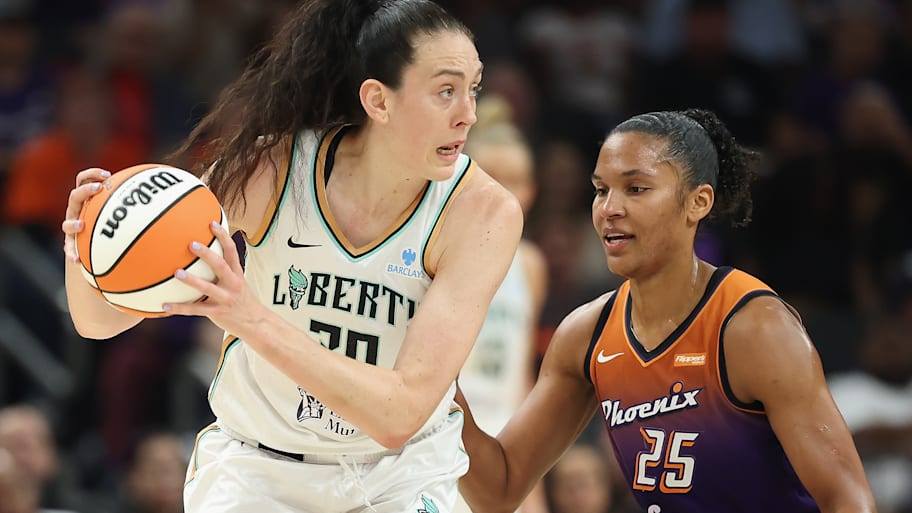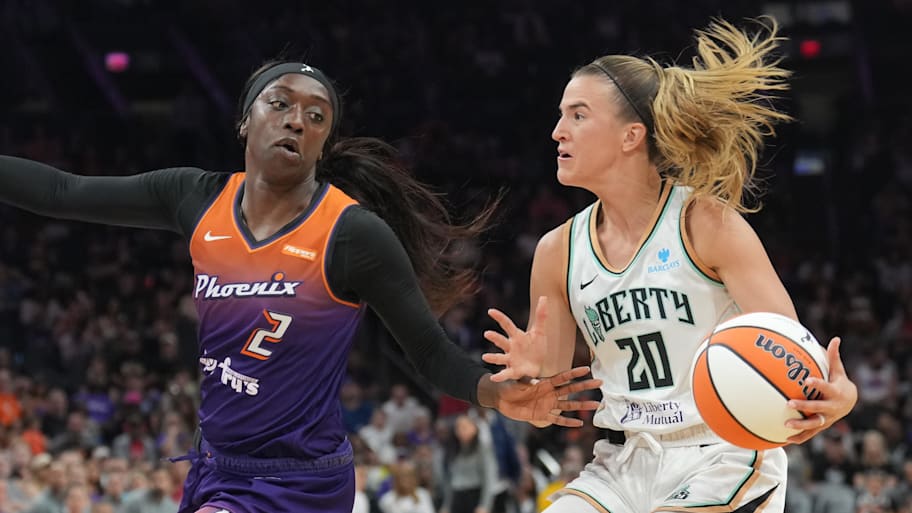The 2025 WNBA playoffs are here. Eight teams are left. One—the Lynx—looks exactly like the dominant machine everyone expected in May. The rest arrive with more open questions than answers. Series by series, here is what you need to know about each team’s season and how they stack up in the first round.

No. 1 Minnesota Lynx vs. No. 8 Golden State Valkyries
What you need to know about Minnesota’s season
Minnesota (34–10) picked up right where it left off following its run to the 2024 WNBA Finals, improving at the edges without compromising its core identity. Point guard Courtney Williams cut her turnover rate while her usage rate climbed, and she upped her three-point shooting frequency and efficiency as well. Guard Natisha Hiedeman and forward Jessica Shephard have filled in as key reinforcements off the bench, blunting the impact of Napheesa Collier’s missed time due to injury. All told, Minnesota’s winning formula remained the same: Share the basketball, shoot well from deep and dominate on defense. With trade deadline acquisition DiJonai Carrington now in the mix, Cheryl Reeve’s odds of sporting pink hair are rising.
What you need to know about Golden State’s season
Not only did the Valkyries (23–21) become the first expansion team to make the playoffs in its inaugural season, but they also set the league’s attendance record and sold out every home game at the Chase Center. It’s not hard to see why fans fell in love with the team: Golden State defended hard, rebounded well and let overlooked players shine. In the first half of the season, forward Kayla Thornton embodied the team’s tenacity and received her first All-Star nod. When she went down with a season-ending right knee injury, guard Veronica Burton stepped up and helped the Valkyries clinch a playoff spot. At the center of it all is first-year coach Natalie Nakase, whose meticulous preparation and leadership gave the team a clear spine.
How the Lynx and the Valkyries match up
Here is a good place to remember the Lynx’s strengths: They led the WNBA in defensive rating. They ranked first in offensive rating. They also ranked first in assist-to-turnover ratio, first in three-point shooting percentage, second in steals per game and second in live-ball turnovers committed per 100 possessions. In plain English: Minnesota makes few mistakes and executes at a high level. As feisty as Golden State has been this season, it will face an uphill battle. In their last game against the Lynx, the Valkyries dominated points in the paint, won the rebounding battle, kept Kayla McBride to 1-of-11 shooting, limited fast break opportunities and … still lost by six. Golden State will need to layer in hot three-point shooting on top of all of that to have more than a puncher’s chance.

No. 2 Las Vegas Aces vs. No. 7 Seattle Storm
Las Vegas Aces What you need to know about Las Vegas’s season
The Aces (30–14) flagged in the first half of the season, slipping to a mediocre 14–13 record at the end of July, and the offseason trade for Jewell Loyd hadn’t worked out as intended. (Las Vegas ranked eighth in points per game, ninth in points per game against and 11th in three-point shooting percentage at that point.) But, the Aces flipped a switch in August and won 16 consecutive games to end the season. What changed? Loyd, who was removed from the starting lineup, provided a much-needed scoring jolt off the bench, and the introduction of NaLyssa Smith allowed A’ja Wilson to shift to the five. It also didn’t hurt that Wilson put her MVP campaign into overdrive.
What you need to know about Seattle’s season
The Storm (23–21) fell into a Jekyll-and-Hyde persona. The good: The Storm are one of two teams that have beaten the league-leading Lynx twice—the Dream are the other—and they can wreak havoc on both ends of the floor. Seattle led the league in fast break points and points off opponent turnovers. The bad: The Storm had back-to-back victories just twice (both in the same three-game winning streak) since the All-Star break, and they’ve allowed the second-most points in the paint per game. The talent has always been there throughout the season: The frontcourt trio of Nneka Ogwumike, Ezi Magbegor and Dominique Malonga offers touch, rim protection and size. Skylar Diggins is a catalyst and tone-setter; Gabby Williams and Brittney Sykes provide two-way juice; Erica Wheeler hits timely shots. The question is whether or not Seattle will live up to its potential.
How the Aces and Storm match up
Will the Aces’ final game of the regular season portend doom for the Storm? Las Vegas sank a WNBA-record 22 threes in its 103–75 win against the Sparks, including seven treys by Loyd, who will have an opportunity for revenge nine months after the Storm jettisoned her. It just so happens that Seattle allowed the highest three-point percentage (33.6%) of any playoff team in the regular season. Worse yet, the Aces have the second-best defensive rating since Aug. 3, and the Storm have struggled at times with a middle-of-the-road half-court offense. If the Storm generate more reliable offense outside of transition, they have plenty of talent to test just how far the Aces have really come.
No. 3 Atlanta Dream vs. No. 6 Indiana Fever
What you need to know about Atlanta’s season
The system of new coach Karl Smesko fit Atlanta (30–14) like a glove. The Dream catapulted from the bottom of the league in offensive rating (96.6, last) toward the top (108.2, second), doing so on the back of the league’s highest rim-or-three shot frequency. Sharpshooting star guards Allisha Gray and Rhyne Howard led Atlanta’s resurgence, both reaching career highs in points per game. At the same time, forward Naz Hillmon developed into a consistent threat from beyond the arc, point guard Jordin Canada thrived in a starting role and Smesko found a way to successfully integrate dominant low posts Bri Jones and Brittney Griner into the team’s offense.
What you need to know about Indiana’s season
Indiana (24–20) began with high hopes but finished with what-ifs, as injuries kept undercutting a team reloaded with Natasha Howard, DeWanna Bonner, Sophie Cunningham and coach Stephanie White. Caitlin Clark never returned in full after suffering quad, groin and ankle injuries. Bonner requested a trade after just nine games in Indiana. In August, the blows kept coming. Point guards Sydney Colson and Aari McDonald were ruled out for the year, and Cunningham (right MCL) and Chloe Bibby (right knee) also suffered season-ending injuries. Even so, Kelsey Mitchell and Aliyah Boston set career highs in scoring and the team’s defense improved, but the Fever will enter the playoffs hobbled.
How the Dream and the Fever match up
Both teams have changed since their last game in July, a 99–82 Indiana home win, and now it will be a tall task for Mitchell, Lexie Hull and Odyssey Sims to limit Canada, Gray and Howard on a nightly basis. The Fever may have a shot if they frustrate Atlanta’s rim pressure and deny spot-up threes, if Boston dominates her matchup against Jones and if Natasha Howard brings her experience to bear and dices the Dream in the paint. That is too many ifs for an Indiana squad decimated by injuries. (Quietly, Atlanta also finished the season with the second-best defensive rating in the W. The Dream are a more complete team than people realize.)

No. 4 Phoenix Mercury vs. No. 5 New York Liberty
What you need to know about Phoenix’s season
The Mercury’s (27–17) success starts and ends with Alyssa Thomas. Operating in space and with shooters dotting the floor, Thomas has keyed Phoenix’s offense with her dominance in the paint and her playmaking. (Thomas ranked fourth in total points in the paint, and she averaged a career high in assists per game.) Surrounding her, rookie Monique Akoa Makani, pro journeywoman Kathryn Westbeld and veteran Sami Whitcomb have kept defenses honest as three-point threats, while Satou Sabally adds even more floor spacing. (Not to mention Kahleah Copper, who worked her way back from a left knee injury and has averaged 15.9 points since August.) Enough about offense, though. The Mercury’s most significant improvement came on the defensive end, where they forced opponents into 15.3 turnovers per game, second highest in the league.
What you need to know about New York’s season
The Liberty (27–17) got off to a blistering start, ascending to a 9–0 record while defeating their opponents by 19 points per game, but it wouldn’t last. A litany of injuries derailed their season. First, star center Jonquel Jones missed about a month with a right ankle sprain. As she got healthy, Breanna Stewart suffered a bone bruise in her right knee and also missed about a month of action. In between, the Liberty had to make do without Leonie Fiebich during EuroCup and figure out backup center duties with Nyara Sabally in and out of the lineup with a knee injury. As a result, New York’s play often felt at odds with its championship expectations. The team’s defense, once a strength, regressed to the middle of the pack and its rebounding was among the worst in the WNBA. The Liberty are fully healthy heading into the playoffs, though it remains to be seen whether they can coalesce into dominant form on an accelerated timeline.
How the Mercury and Liberty match up
Out of the four regular-season games between Phoenix and New York, no game was decided by fewer than eight points. Two of the common threads? The Mercury shot over 44% (30–66) from three in two of their three wins, and the Liberty’s defense wasn’t up to par. Between Natasha Cloud, Sabrina Ionescu, Fiebich, Stewart, Jones, Emma Meesseman and Kennedy Burke, New York has the length and versatility to guard and keep pace with anyone. As the Mercury have shown, that doesn’t always come together. The series is anyone’s for the taking, especially if the Liberty’s turnover problem creeps up at any point: New York has had 20-plus turnovers in seven different games, the most among any playoff team.
More WNBA on Sports Illustrated
This article was originally published on www.si.com as Breaking Down Every First-Round Matchup of the WNBA Playoffs.
